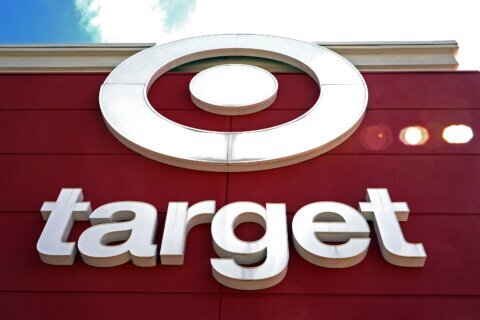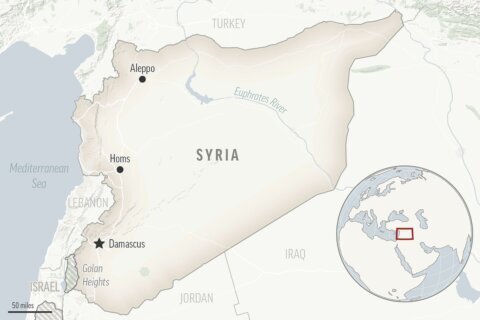Thousands of former college athletes will be eligible for payments ranging from a few dollars to more than a million under the $2.78 billion antitrust settlement agreed to by the NCAA and five power conferences, a deal that also paves the way for schools to directly compensate athletes while attempting regulate payments from boosters.
Details of the sprawling plan were filed Friday in federal court in the Northern District of California, a little more than two months after the framework of an agreement was announced. The deal must still be approved by a judge.
“College athletes will finally be able to share in the billions of dollars their compelling stories and dynamic performances have generated for their schools, conferences, and the NCAA,” the filing said. “This is nothing short of a seismic change to college sports following more than four years of hard-fought victories in this case.”
The full term sheet includes guidelines on roster caps for individual sports that will replace scholarship limits; how the new financial payments will be monitored and enforced to ensure compliance by schools; how third-party payments to athletes will be regulated; and how nearly $3 billion in damages will be doled out over the next 10 years.
Those payouts will vary drastically and are determined by sport played, when, how long and what conference an athlete competed in. While Division I athletes across all sports will be eligible to collect damages, the majority of damages is expected to go to football and basketball players from power conferences because those leagues and teams generate most of the revenue that comes from billion-dollar media rights contracts.
The deal covers three antitrust cases — including the class-action lawsuit known as House vs. the NCAA — that challenged NCAA compensation rules dating to 2016. The plaintiffs claimed NCAA rules denied thousands of athletes the opportunity to earn millions of dollars off the use of their names, images and likenesses.
The NCAA lifted its ban on athletes earning money through endorsement and sponsorship deals in 2021.
The agreement does not settle the issue of whether college athletes should be deemed employees, but it does include language that would suggest the deal would be subject to change if “a change in law or circumstances permits collective bargaining.”
The NCAA and college sports leaders continue to plead for help from Congress in the form of a federal law that would supersede state laws and allow the association and conferences to self govern without fear of future antitrust litigation.
“This settlement is an important step forward for student-athletes and college sports, but it does not address every challenge,” the commissioners of the Atlantic Coast Conference, Big Ten, Big 12, Pac-12, Southeastern Conference and NCAA President Charlie Baker said in a joint statement. “The need for federal legislation to provide solutions remains. If Congress does not act, the progress reached through the settlement could be significantly mitigated by state laws and continued litigation.”
While that help still seems unlikely to come soon — especially with a presidential election months away — college sports leaders hope the settlement can provide some certainty for schools and finally stem the constant legal attacks on its antiquated model of amateurism.
Paying athletes
The NCAA and conferences have agreed to amend their rules to permit a landmark compensation system that allows schools to share up to about $21 million in athletic revenues with their athletes annually, starting in 2025.
The NCAA and conferences will be permitted to make rules that prevent schools from circumventing the cap.
That number is derived from taking 22% of the average revenue generated through media rights contracts, tickets and other sources by power conference schools. The agreement will create an audit system that allows plaintiffs to monitor athletic revenue, which is expected to rise in the coming years as new media rights agreements kick in for conferences and the College Football Playoff.
Athletes are projected to receive $1.5 billion to $2 billion annually.
All athletes will be eligible to receive the new financial benefits, but each school will be permitted to determine how they want to divvy up the money among sports. How exactly Title IX gender equity rules apply is still unclear and will require federal clarification. How schools comply with Title IX will be the responsibility of each institution.
Scholarships and rosters
Replacing scholarship limits with roster caps could mean even more athletic scholarship opportunities in Division I.
Most notably, major college football teams will now be permitted to have 105 player on scholarship instead of the current 85, though schools will no longer be required to give full scholarships to every football player.
Partial scholarships have been used in some sports for years, but will now be permitted in all.
The roster caps for baseball (34), softball (25) and volleyball (18) will also allow for a significant jump in the number of scholarships schools can provide in those sports, though schools will not be required to meet the cap.
NIL deals and oversight
NCAA rules have been tweaked to allow schools to be more involved in providing NIL opportunities for college athletes, but they will still be allowed to strike deals with third parties.
However, athletes will be required to report deals with third parties that surpass $600 to an outside clearinghouse.
The NCAA is also creating a public database that it hopes will allow athletes to assess fair market value.
Booster-funded NIL collectives have become a common way athletes are compensated, but now those deals will be subject to review through an arbitration process to determine if it is for a “valid business purpose,” according to the agreement.
Violations could lead to eligibility penalties for athletes and sanctions for schools.
Damage payments
The plaintiffs in the House case are responsible for doling out damages. Included in Friday’s filing was a chart breaking down the categories of eligible athletes along with four different types of payouts they could be in line to receive.
According to the plaintiffs, about 19,000 power conference football players and men’s basketball players will be in line to receive an average of $91,000, with payments ranging from $15,000 to $280,000 just for what is referred to broadcast name, image and likeness.
Some of those same athletes could also be in line for tens of thousands of dollars more related to lost opportunities to earn NIL money while in college and what is deemed by the plaintiffs as pay-for-play. Plaintiffs’ lawyers say a few athletes will be eligible to receive upward of $1 million.
Next steps
Plaintiffs’ attorneys say they will file a motion for preliminary approval and — if granted — a public website will go up in about two months where former college athletes can determine how much they are eligible to receive.
Still, the settlement is months away from final approval. There will be an opportunity for athletes who are members of the plaintiffs’ class to object to the settlement and ask to be excluded. Already one school, Houston Christian, has objected — though the judge denied its request to intervene.
“We are moving forward in the right direction by giving college athletes what they have EARNED & DESERVE which has been long overdue,” said Sedona Prince, a college basketball player now at TCU and one of the plaintiffs in the House case. “We still have a long way to go and I pray athletes ask more questions and demand more answers from the leaders at their schools, conferences and the NCAA.”
___
Follow Ralph D. Russo at https://twitter.com/ralphDrussoAP
___
AP college football: https://apnews.com/hub/college-football
Copyright © 2024 The Associated Press. All rights reserved. This material may not be published, broadcast, written or redistributed.







